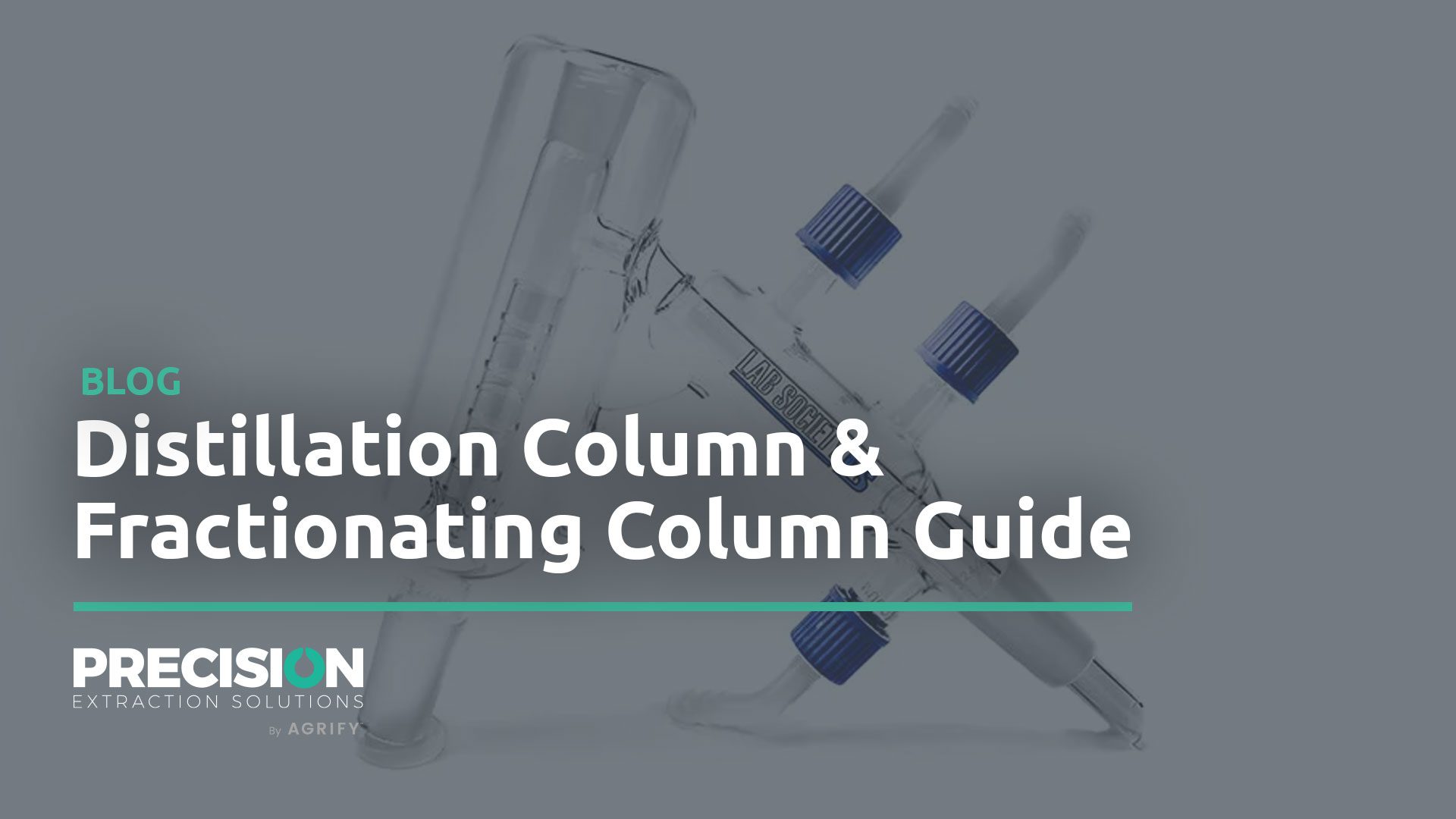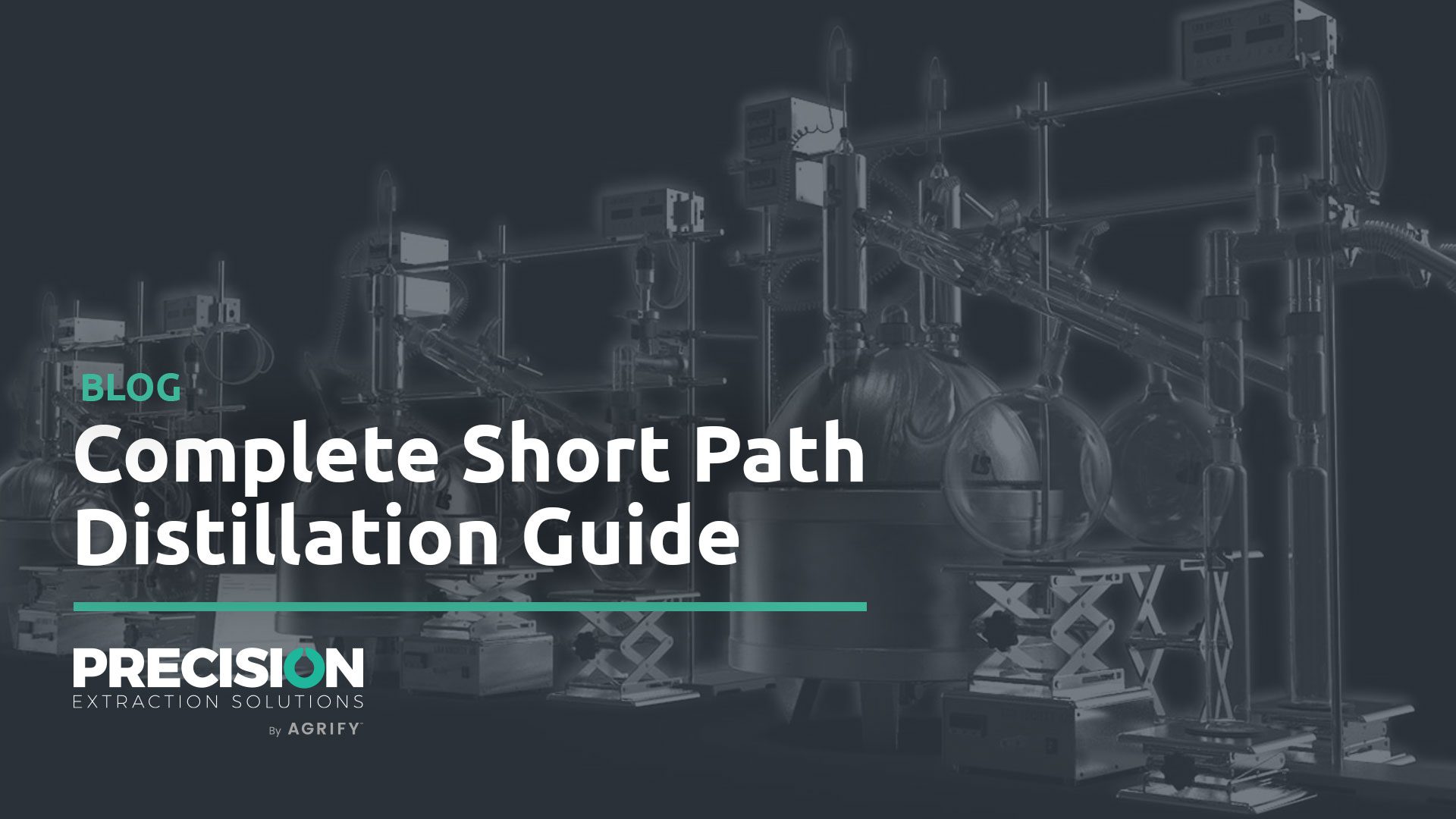The global cannabis concentrate market was valued at $3.5 billion in 2022 (Grandview Research). Far from a straightforward space, this broad category contains a multitude of possibilities for types of extraction and SKUs. But for the average recreational consumer, shatter, wax, crumble, and budder are the names that matter, making them the most common concentrates available.
The starting point for most of these dab-friendly concentrates is hydrocarbon-extracted crude oil. All are extracted in the same manner, and the visual and textural differences between shatter vs wax or shatter vs budder stem primarily from differences in post-processing techniques. When it comes down to it, crumble and budder are types of wax, differing only in texture, and can be considered subcategories of wax. While the nomenclature of most cannabis concentrates isn’t always straightforward, understanding the basic production principles behind these concentrates is.
Below, we break down the differences between shatter and waxes (including crumble and budder) as made possible by processing hydrocarbon crude oil from machines such as the PX1 Hydrocarbon Extractor from Precision by Agrify.
What is Shatter?
Shatter is a visually striking cannabis concentrate with a clear, glass-like consistency. Unlike other soft, malleable concentrates, shatter maintains a firmer texture that requires a user to “shatter” or “pull and snap” to break off small pieces for consumption.
True shatter is translucent and ranges from dark brown to bright golden-yellow. It’s vaped, dabbed, or goes through further post-processing for vape carts and edibles.
Shatter production begins with a low-temperature hydrocarbon extraction, typically from a butane-based solvent blend. Propane-heavy extractions tend to lead to a crystallized or sugary texture rather than a glass-like consistency thanks to the extraction of a more complex terpene profile.
A technician pours the crude oil onto trays to create a thin film of concentrate and then vacuum purges for 36 to 72 hours. The purge is visible through the appearance of bubbles on the surface of the slab. Some operators flip the slab several times for a more efficient purge.

What is Wax?
“Marijuana wax,” “dab wax,” “weed wax,” or “thc wax,” are all ways of searching for the cannabis concentrate wax. As the name suggests, wax has a “waxier” consistency than shatter. It ranges in texture from slightly soft (crumble wax or crumble) to firm (honeycomb wax).

Wax is always opaque and ranges from deep golden-brown to bright yellow. It’s a high-potency concentrate but retains a unique terpene profile. It’s typically dabbed or vaporized.
Wax starts with crude oil produced via butane-based hydrocarbon extraction. Then, technicians purge any lingering solvents within the crude oil in a vacuum oven.
The operators pour the crude oil into thin layers, called slabs, on parchment-lined trays, then bring the vacuum oven to temperature before pulling vacuum. The vacuum facilitates the purging of residual solvents at a relatively low temperature, which in turn ensures better terpene preservation.
Hydrocarbon extraction followed by vacuum purge is the standard for all dab-destined concentrates. However, a few additional steps are required to achieve the texture and consistency of wax. For most varieties of hydrocarbon wax, the concentrate is whipped after the vacuum purge process. Some operations whip the crude oil, others fold and knead. Some operations purge then whip, others whip then purge. In any case, the general consensus is that both manipulation and purging are required to achieve the desired waxy texture for this type of concentrate.
The act of whipping the concentrate serves to separate the THCA from waxes, lipids, and terpenes remaining within the concentrate. This THCA then joins together to form crystals suspended within the waxy lipid mixture. Waxes with a lower terpene content will often take on a “drier” consistency typical of “crumble” waxes.
Wax is usually purged for longer than all other extracts to reach a drier consistency. Finally, not all cultivars are suitable for crumble production, and over-whipping may create a badder rather than a honeycombed crumble wax.
Budder Wax
Budder is a catch-all term covering the stickier end of waxes, including budder wax, badder, BHO budder, cake badder, and a variety of other product terms.
After the crude oil is purged, the hot concentrate is poured into a dish then whipped like all “wax” type concentrates. Waxes with higher terpene content will often take on a “wetter” consistency typical of “budder” waxes. Whipping is still primarily a manual process, done in small batches. It changes the color from dark brown to golden, and the concentrate becomes opaque. The name budder or badder stems comes from the similarity to creamed butter or cake batter.
Small-Scale Solution, Unlimited Concentrates
Wax and shatter are just two of the most common categories of concentrate that all stem from the same crude oil, produced from the same closed-loop extractor. The characteristics that make each of them unique, like the glass-like snap of shatter or the creamy, or the golden whip of waxy budder, are all thanks to subtle variations during post-processing.
Shatter, wax, crumble, budder, and other variations within this spectrum are all possible with Precision’s PX1 Closed Loop Hydrocarbon Extractor for propane and butane. It’s renowned throughout the industry for producing award-winning extracts.
Thanks to equipment-wide temperature control and an inline dewax column, it’s highly adaptable. Plus, it has an 11 liter/5 lb average capacity per batch. This entry-level solution is designed for concept-proofing and startups but is perfectly scalable to help achieve long-term production goals.
Ready to learn more about the scalable potential of Precision’s PX1? Speak with an extraction expert today.
CTA alternative: Grow your line of concentrate SKUs with Precision’s PX1. Speak with an extraction expert today.










